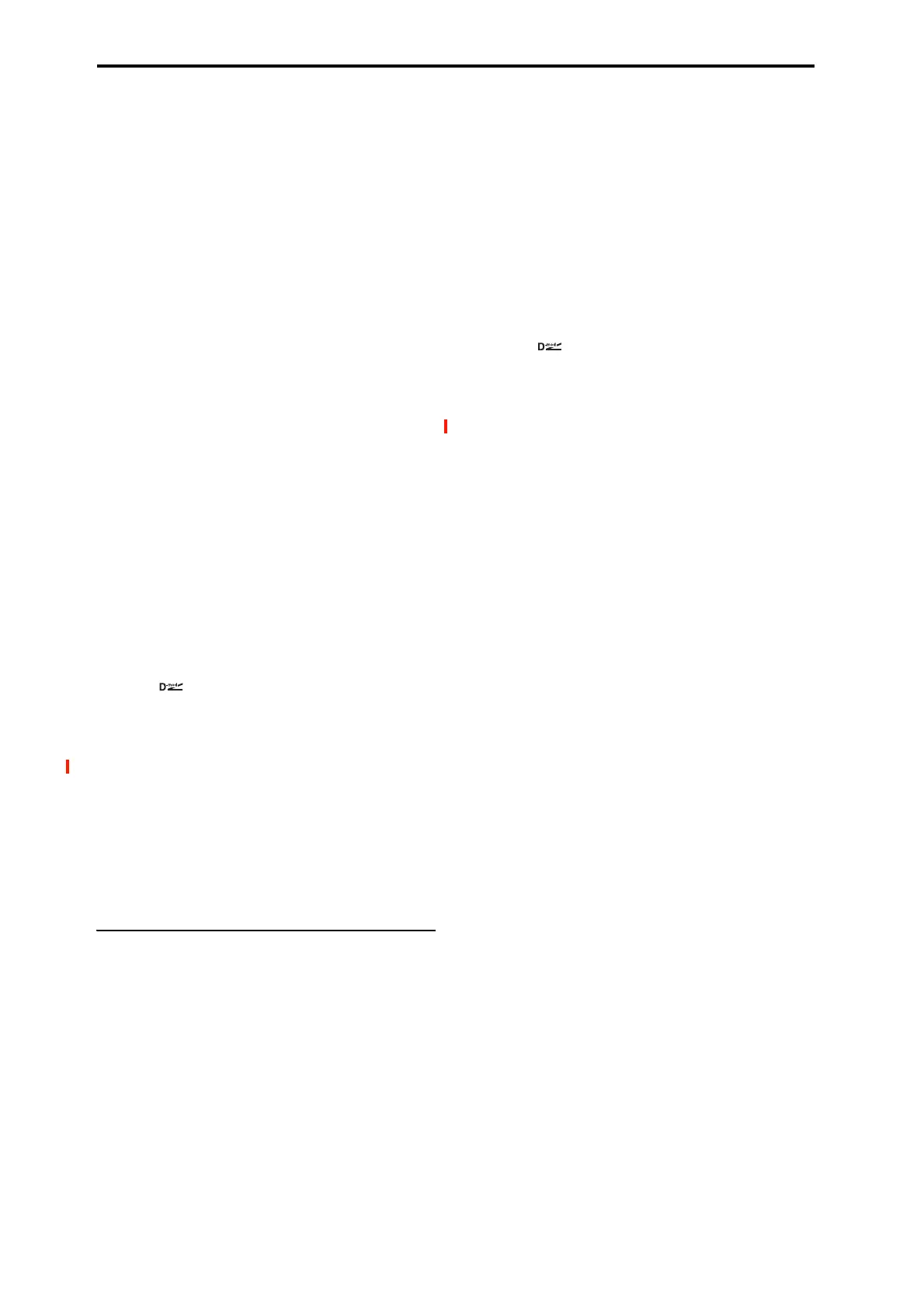862
FLANGER
Delay Time [msec] [0.0…1350.0]
Sets the delay time.
Depth [0…100]
Sets the depth of LFO modulation.
Feedback [+/–100]
This controls the intensity of the flanger effect. Positive and
negative values create different timbres. To produce a chorus
effect instead of flanging, set this to +0.
Mixing the processed and dry signals via Wet/Dry will
enhance the effect. For maximum intensity, set Feedback
and Wet/Dry so that they are either both positive or both
negative; this emphasizes the flanger’s harmonic peaks.
Output Mode [Normal, Wet Invert]
Normal sends the output of the chorus/flanger to both
outputs with the same phase.
Wet Invert flips the phase of the chorus/flanger’s right
channel. This creates a pseudo-stereo effect, adding depth to
the sound.
However, if a mono-input effect is connected after this
effect, the left and right sounds may cancel each other,
eliminating the chorus/flanger effect.
Some of the Mono-Mono Serial effects include a Routing
parameter, which allows you to swap the order of the effects.
When the Routing is set so that the Chorus/Flanger comes
first (such as Flanger > Comp or Flanger > OD/HG), the
will be grayed out; internally, it will act as if set to Normal.
Wet/Dry [–Wet…
–1:99,
Dry, 1: 99…Wet]
Sets the balance between the “wet” processed sound and the
dry input. Negative values invert the phase of the wet signal.
This interacts with Feedback, as described above.
Note: 138: Cho/Flanger - Multitap Dly does not include
Wet/Dry modulation for the Chorus/Flanger section.
Source [Off…Tempo]
Selects the Wet/Dry modulation source for the
chorus/flanger.
Amount [+/–100]
Sets the Wet/Dry modulation amount for the chorus/flanger.
PHASER
LFO
Waveform [Triangle, Sine]
Selects the LFO Waveform.
Frequency [Hz] [0.02…20.00]
Sets the LFO speed.
PHASER
Manual [0…100]
Sets the phaser’s center frequency.
Depth [0…100]
Sets the depth of LFO modulation.
Resonance [+/–100]
This controls the intensity of the phaser effect. Positive and
negative values create different timbres.
Mixing the processed and dry signals via Wet/Dry will
enhance the effect. For maximum intensity, set Resonance
and Wet/Dry so that they are either both positive or both
negative; this emphasizes the phaser’s harmonic peaks.
Output Mode [Normal, Wet Invert]
Selects whether the phaser output is mono or pseudo-stereo.
For more information, see the Chorus/Flanger “Output
Mode,” above.
Wet/Dry [–Wet…
–1:99,
Dry, 1: 99…Wet]
Sets the balance between the “wet” processed sound and the
dry input. Negative values invert the phase of the wet signal.
This interacts with Resonance, as described above.
Note: 139: Phaser - Chorus/Flanger does not include
Wet/Dry modulation for the Phaser section.
Source [Off…Tempo]
Selects the Wet/Dry modulation source for the phaser.
Amount [+/–100]
Sets the Wet/Dry modulation amount for the phaser.

